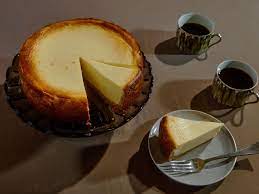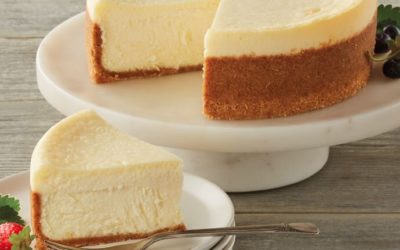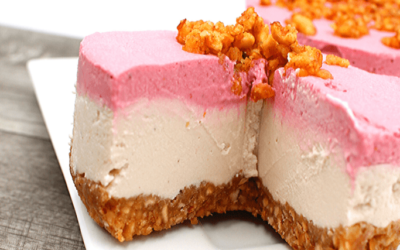Cheesecake, a dessert universally adored, has many faces across the world. Whether you prefer it dense or fluffy, sweet or slightly sour, there’s a cheesecake for everyone like there’s a roulette online for money available everywhere. This culinary journey aims to take you on a tour of unique cheesecake recipes from various countries, emphasizing not only the recipes themselves but the rich histories and tales interwoven with each delicious slice.
1. New York-Style Cheesecake (United States)
Origin: It’s believed that cheesecake originated in ancient Greece and was served at the first Olympic games. However, the New York version is attributed to Arnold Reuben, who claimed to have come up with the recipe in 1929.
Story: Immigrants carried the European cheesecake traditions to America. With the advent of cream cheese in the 1870s, the texture of American cheesecakes became smoother and creamier. The dense and creamy New York cheesecake uses cream cheese as its primary ingredient and is often topped with a sour cream layer, further enhancing its rich flavor.
Ingredients:
- 1 1/2 cups graham cracker crumbs
- 1/4 cup melted butter
- 4 cups cream cheese
- 1 1/4 cups granulated sugar
- 1 tsp vanilla extract
- 4 large eggs
- 1 cup sour cream
Method:
- Preheat the oven to 325°F (163°C).
- Mix graham cracker crumbs with melted butter and press into the bottom of a springform pan.
- Beat cream cheese, sugar, and vanilla until smooth. Add eggs one at a time. Fold in sour cream.
- Pour batter over crust. Bake for 55 minutes or until set.
- Cool and refrigerate for at least 4 hours before serving.
2. Basque Burnt Cheesecake (Spain)
Origin: This rustic cheesecake originates from the Basque Country in Spain.
Story: Unlike other cheesecakes, this one lacks a crust and has a caramelized exterior. The burnt top might seem like a mistake, but it’s purposeful and offers a beautiful bittersweet contrast to the creamy interior. Originating from the ‘La Viña’ restaurant in San Sebastian, this cheesecake’s imperfect appearance became its signature, emphasizing that sometimes, beauty lies in imperfection.
Ingredients:
- 2 cups cream cheese
- 1 cup granulated sugar
- 3 large eggs
- 1 1/2 cups heavy cream
- 1 tsp vanilla extract
- 2 tsp all-purpose flour
Method:
- Preheat the oven to 430°F (220°C).
- Beat cream cheese and sugar until smooth. Add eggs one by one. Mix in heavy cream, vanilla, and flour.
- Pour into a springform pan. Bake for 30 minutes or until the top is deeply caramelized.
- Let cool and refrigerate.
3. Ricotta Cheesecake (Italy)
Origin: Italy, home to many culinary marvels, has its version of cheesecake using ricotta cheese.
Story: Differing from the cream cheese-based cakes of America, the Italian cheesecake is lighter, slightly grainy, and subtly sweet. Ancient Romans made their cheesecakes (or “savillum”) with ricotta-like cheese, sweetened with honey and flavored with bay leaves. While modern versions might forgo bay leaves, they retain the essence of the Roman palate.
Ingredients:
- 2 cups ricotta cheese
- 3/4 cup granulated sugar
- 3 large eggs
- 1 tsp vanilla extract
- Zest of 1 lemon
Method:
- Preheat the oven to 350°F (175°C).
- Mix ricotta cheese and sugar. Beat in eggs, vanilla, and lemon zest.
- Pour into a springform pan. Bake for 45 minutes or until set.
- Let cool and refrigerate.
4. Quark Cheesecake (Germany)
Origin: Known in Germany as “Käsekuchen”, this cheesecake uses quark, a type of fresh cheese.
Story: Quark gives the cake a uniquely tangy flavor and a less dense texture compared to its American counterpart. Some suggest that cheesecakes made with quark date back to medieval monasteries in Germany. Whether that’s true or not, Germans have perfected the balance between tartness and sweetness in their beloved Käsekuchen.
Ingredients:
- 2 cups quark
- 1/2 cup granulated sugar
- 3 large eggs
- 1 tsp vanilla extract
- 1/4 cup melted butter
- 2 tsp all-purpose flour
Method:
- Preheat the oven to 350°F (175°C).
- Mix quark, sugar, and vanilla. Beat in eggs. Add melted butter and flour.
- Pour into a springform pan. Bake for 50 minutes or until lightly golden.
- Cool and refrigerate.
5. Sernik (Poland)
Origin: Poland’s national cheesecake, Sernik, primarily uses twaróg, a type of curd cheese.
Story: Sernik has graced Polish tables for centuries. With variations across regions, some prefer it with raisins, while others favor a chocolate swirl. A common feature in many Eastern European countries, each boasts its unique twist to the recipe. In Poland, Easter and Christmas celebrations are incomplete without this cherished dessert.
Ingredients:
- 2 cups twaróg (or farmer’s cheese)
- 3/4 cup granulated sugar
- 5 large eggs
- 1 tsp vanilla extract
- Zest of 1 lemon
- 1/4 cup all-purpose flour
Method:
- Preheat the oven to 350°F (175°C).
- Beat twaróg with sugar, vanilla, and lemon zest. Mix in eggs and flour.
- Pour into a springform pan. Bake for 50 minutes or until golden.
- Let cool and refrigerate.
6. Tarta de Queso (Argentina)
Origin: Moving to South America, Argentina’s cheesecake is a delightful experience.
Story: Argentinians, known for their sweet tooth, often serve Tarta de Queso with dulce de leche, a caramel-like sauce. Unlike other cheesecakes that strive for a smooth texture, the Argentinean version celebrates a more curdled consistency. It’s a reflection of the country’s European influences and the indigenous love for bold flavors.
Ingredients:
- 2 cups cream cheese
- 3/4 cup granulated sugar
- 3 large eggs
- 1 tsp vanilla extract
- Dulce de leche, for topping
Method:
- Preheat the oven to 350°F (175°C).
- Beat cream cheese with sugar and vanilla. Mix in eggs.
- Pour into a springform pan. Bake for 40 minutes or until set.
- Cool, refrigerate, and top with dulce de leche before serving.
Note: For all cheesecakes, it’s recommended to use a springform pan for easier removal. Also, it’s important to note that oven temperatures and times may vary, so it’s advisable to keep an eye on your cheesecake and adjust accordingly.
In Conclusion
Cheesecake is not just a dessert; it’s a testament to a region’s history, culture, and preferences. Each bite tells a story, interlaced with centuries of tradition and evolution. While the ingredients might vary—cream cheese, ricotta, quark, or twaróg—the love for this delectable dessert remains a global constant. As we embrace globalization, let’s also cherish the unique cheesecake tales from every corner of the world.



